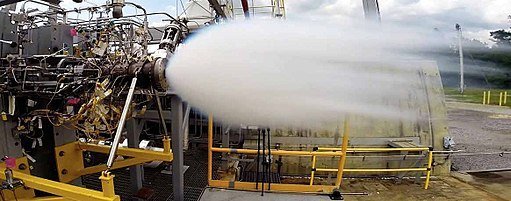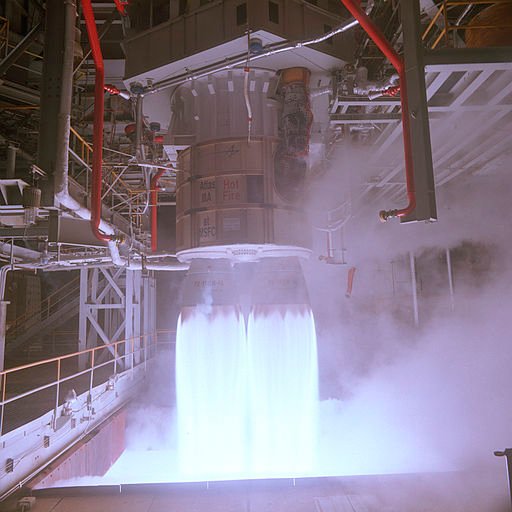STATIC ROCKET ENGINE TESTS
For a while now, I have been wondering how aerospace engineers perform static engine tests without the engines flying off to the atmosphere based on Newton’s third law of motion.
For every action, there is an equal and opposite reaction.
Well first of, why are these tests performed? The engine tests are required before the engine is certified for flight mainly due to the fact that it is generally inexpensive compared to the cost of risking an entire mission or the lives of the flight crew if anything goes wrong with the flight vehicle. These tests are carried out in a rocket engine test facility where rocket engines may be tested on the ground, under controlled conditions.
Now there are two test conditions available for testing
- Sea level tests
- Altitude tests
SEA LEVEL TESTS
Compared to altitude testing, sea level static testing is much simpler. Sea level testing are conducted in a rocket engine test facility to direct the rocket exhaust safely towards the open atmosphere and to also be able to hold down the rocket. Parameters like the sea level thrust, structural integrity, and system operations reading can be measured and confirmed.

The rocket engine constrain may take form in vertical or horizontal position. Liquid rocket engines are usually fired in a vertical position because the propellant pump intakes are designed to draw fuel from the bottoms of the fuel tanks. The propellant weight has an effect on the thrust measurement system (TMS), and must be accounted for as the engine is being fired. The exhaust from the rocket can be aimed into a flame bucket or trench. The flame bucket is constructed to alter the direction of the exhaust to a safe direction. The flame bucket is also guarded by a water deluge system that reduces the sound pressure level and also reduce the temperature of the exhaust. The loudness or sound pressure level of a rocket engine has been determined to be above 200 decibels.
Solid rocket engines can be fired in either a vertical or horizontal direction. The thrust measurement system does not necessarily have to account for the change in weight of the rocket in a horizontal orientation. The combined flame trench need not be so rugged compared to the vertical orientation, but the water system may be less effective at reducing the loudness of the engine.
All test stands require safety arrangements to guard against an unexpected engine explosion. Some safety guidelines that are followed include constructing the facility at some safe distance from inhabited areas or other critical facilities, setting the stand behind a thick concrete blast wall or earthen berm, and the use of inerting system (either gaseous nitrogen or helium) to prevent the buildup of explosive substances.
However, due to the fact that rockets engines are basically intended to operate in very thin atmosphere or none (space), rocket engine systems that perform excellently at sea level may behave very differently in space.
ALTITUDE TESTS
The edge altitude testing has over sea level testing is that its gives a better simulation of the rocket's operating condition. As air pressure reduces with increase in altitude, the effects of lower air pressure include more powerful rocket thrust and heat transfer is lower.
The engine is installed inside a confined cubicle that has been evacuated with pressure level at its lowest before the engine is tested. The operating pressure level of a typical testing cubicle is about 0.16 psi (about altitude of 100,000 feet). This pressure level is set inside the cubicle by mechanical pumping, making altitude facility to be much more complex than a sea level facility. The Mechanical pumps are powered by steam ejector/diffusers. Just like in sea level testing, the chamber or cubicle is inerted if the products from the engine firing include explosive materials for example gaseous nitrogen (GN2). The inerting process is to prevent the buildup of explosive substances.
CONCLUSION
In my own opinion, I think that in order to justify static rocket test, there would have to be some failure condition types that:
- Can be detected in a static test fire,
- And are serious enough to threaten mission success if only detected after launch.
Space companies like NASA and SpaceX would rather go through the hassle of testing rocket engines over and over again to certify them for launch than have to gamble with the payload or the lives of the flight crew. In the event of disastrous failure during the test fire, only the really costly launcher/engine is lost, not the VERY really expensive payload.
Thanks for reading through, your thoughts are important.
Until my next post,
Do not forget to comment, upvote and follow.
CHEERS
If you write STEM (Science, Technology, Engineering, and Mathematics) related posts, consider joining #steemSTEM on steemit chat or discord here. If you are from Nigeria, you may want to include the #stemng tag in your post. You can visit this blog by @stemng for more details.


Congratulations! This post has been upvoted from the communal account, @minnowsupport, by akinwonmi from the Minnow Support Project. It's a witness project run by aggroed, ausbitbank, teamsteem, theprophet0, someguy123, neoxian, followbtcnews, and netuoso. The goal is to help Steemit grow by supporting Minnows. Please find us at the Peace, Abundance, and Liberty Network (PALnet) Discord Channel. It's a completely public and open space to all members of the Steemit community who voluntarily choose to be there.
If you would like to delegate to the Minnow Support Project you can do so by clicking on the following links: 50SP, 100SP, 250SP, 500SP, 1000SP, 5000SP.
Be sure to leave at least 50SP undelegated on your account.